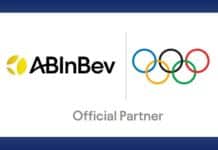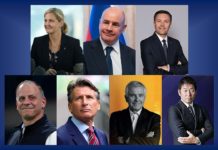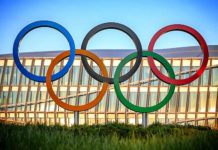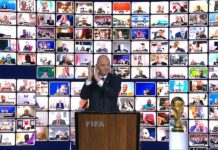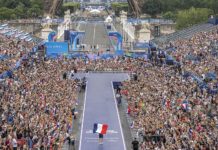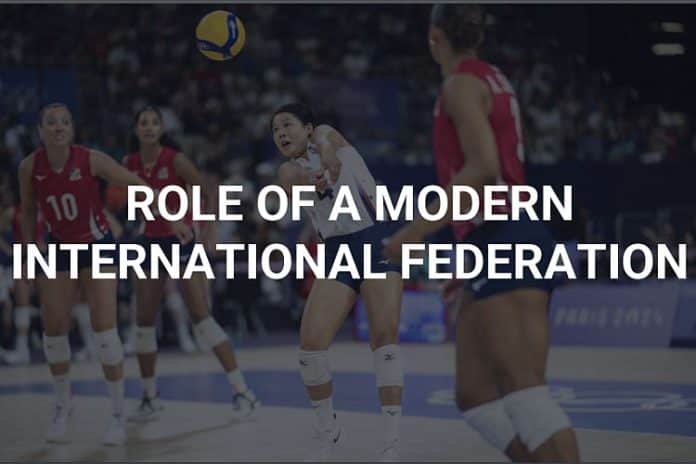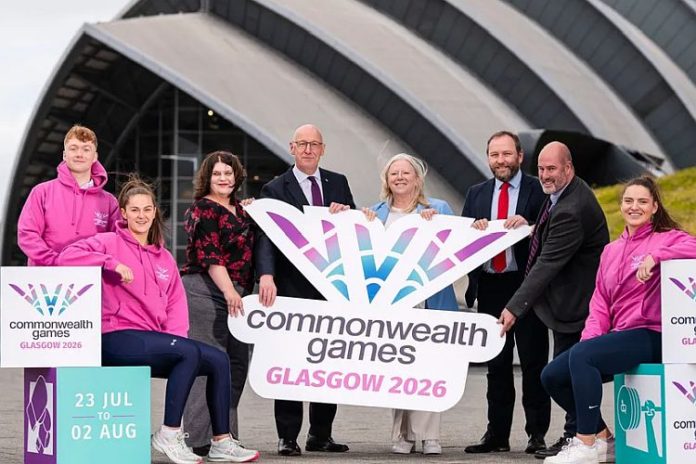★ The Sports Examiner: Chronicling the key competitive, economic and political forces shaping elite sport and the Olympic Movement.★
★ To get the daily Sports Examiner Recap by e-mail: sign up here! ★
≡ IF FORUM ≡
“Aspiration to be part of the Olympic Games is a very worthwhile IF ambition, but should not, in my view, mainly, and certainly not only, be based on direct financial gain. Through the IFs and the NOCs the IOC has provided billions of dollars of direct funding for sports development worldwide in the last 30 years, but times are changing.
“In future, it may not be that this direct funding will be able to just grow and grow. Uncertainty about the value of future broadcast rights and sponsorship values, combined with significantly continuous rising costs of staging major events for all of us, not just the IOC, but especially the federations, provide questions that have to be answered.”
That’s Andrew Ryan (GBR), the retiring Executive Director of the Association of Summer Olympic International Federations (ASOIF), speaking at the IF Forum in Lausanne, Switzerland, with a perspective on the last 30 years of development among the federations.
Ryan illustrated his talk with a fascinating set of slides, which demonstrated the enormous growth of sport over the last 50 years:
● Competitions held by International Federations totaled just 90 in 1970, but were up to 434 by 1990, 1,200 by 2000 and 2,391 by 2013 and are continuing to grow.
● Funding from the International Olympic Committee’s television rights share was $37.5 million for Barcelona 1992, and $161 million by Sydney 2000. But it exploded up to $296 million for Beijing 2008, then $520 million for London 2012 and $540 million for 2016 and 2020.
● International Federation dependance on IOC funding for operations has slowly decreased from an average of 41% for Athens 2004 to 33% for Rio 2016.
● For the 2013-16 quadrennial, IOC funding made up less than 50% of revenues for 19 of 27 ASOIF federations, with four at 65% or more and two at more than 80%.
So, most federations are getting more able to manage their own affairs and raise their own money to run their own programs. But Ryan pointed out that “defensive” costs are on the rise – things that federations have to guard against – and will continue to rise:
● Doping
● Fan betting and corruption
● Event and cyber security
● Sustainability and environmental issues
● Medical issues at events for athletes and fans
Moreover, federations are being looked to for support up and down each sport’s ecosystem:
● Athlete scholarships and prize money
● Athlete coaching and training support
● Youth and junior competitions
● Coaches and officials training and testing
● Athlete safeguarding and mental health
● Good governance and transparency
Ryan explained that he sees International Federations maintaining five primary roles:
● “Maintain exclusive control of rules and regulations.
● “Own World Championships as primary rights holder.
● “Secure a name reflecting position in sport hierarchy.
● “Control the global competition calendar.
● “Secure the right to name World Champions and establish the world ranking.”
And into the future. Ryan emphasized that a modern IF needs three primary characteristics: to be entrepreneurial and professional, to be commercially driven and to be proactive and creative.
Using these three elements, federations can take on multiple partnerships with event promoters, businesses and governments to make their events successful, balance their risks with up-side rewards for all partners and develop their own routes to the marketplace through assembling audiences via digital offerings.
Observed: Ryan came from the Badminton World Federation and became the ASOIF Executive Director in 2006. He has seen a lot change across 17 years with ASOIF and is well positioned to note that IOC television money as the “golden goose” for the Olympic federations is not assured forever.
He notes, as one element of the characteristics of a modern International Federation is to be “commercially driven” and to find partners in event promoters, sponsors and governments. That is exactly how the Olympic Movement has prospered since the pivotal 1984 Olympic Games in Los Angeles.
And it is now the most successful of all IFs – FIFA – has prospered like never before. Like the Olympic Games, it now has fans, spectacle and reach, combined as a powerful magnet to attract both companies and countries to its side. Those are the models that are winning today.
¶
★ Receive our exclusive, weekday TSX Recap by e-mail by clicking here.
★ Sign up a friend to receive the TSX Recap by clicking here.
★ Please consider a donation here to keep this site going.
For our updated, 885-event International Sports Calendar for the rest of 2024, 2025 and beyond, by date and by sport, click here!


